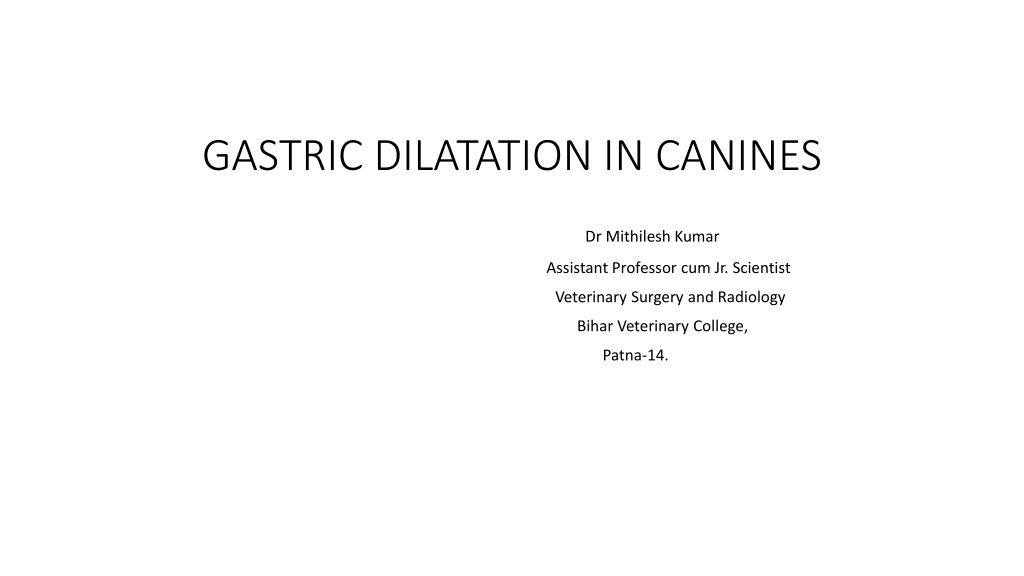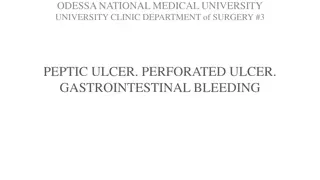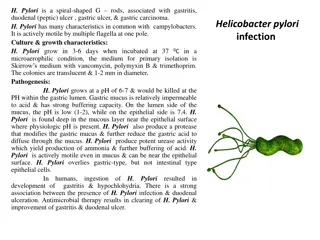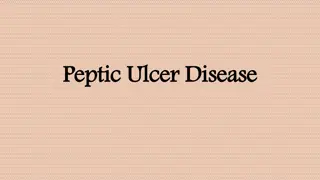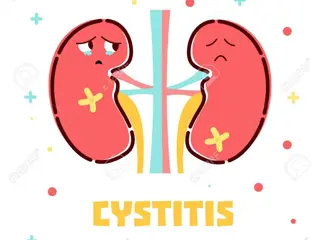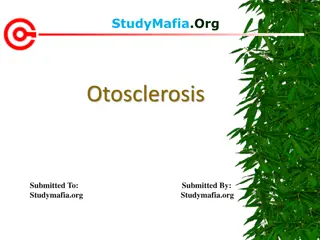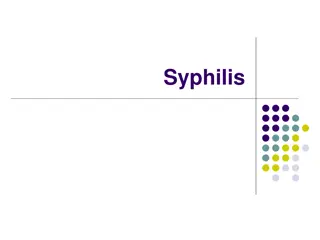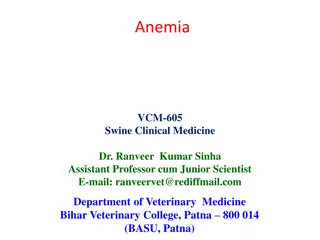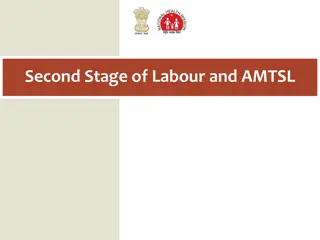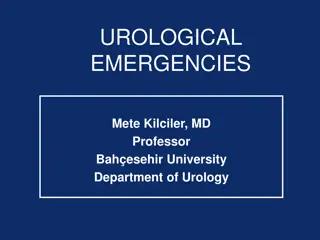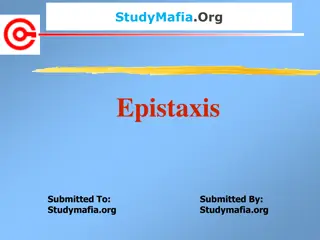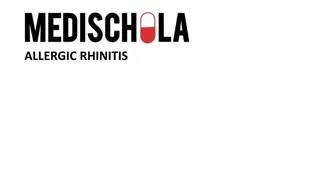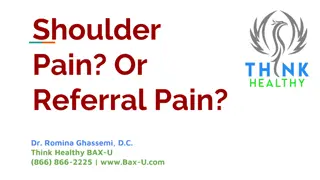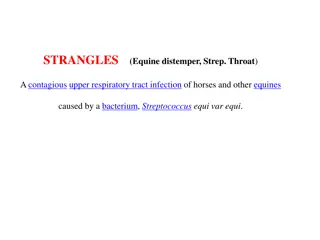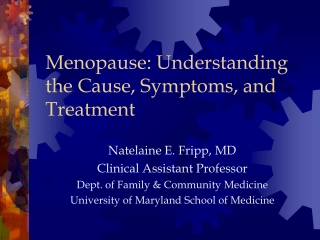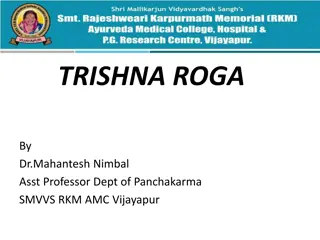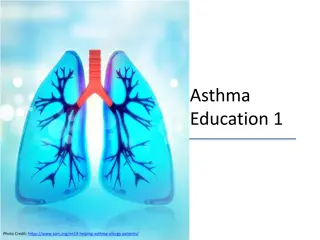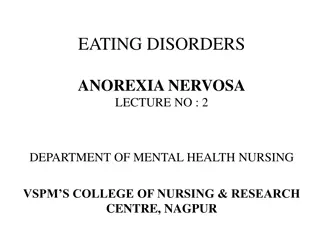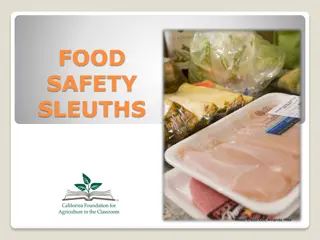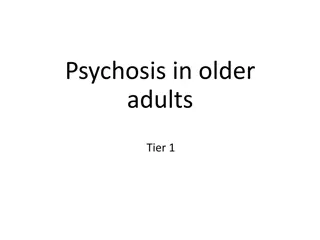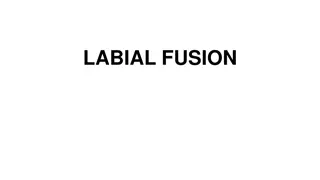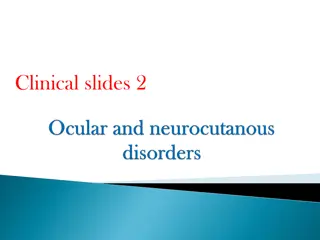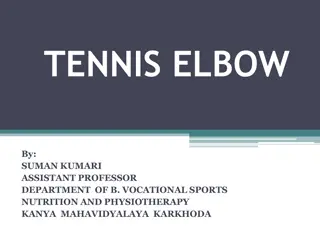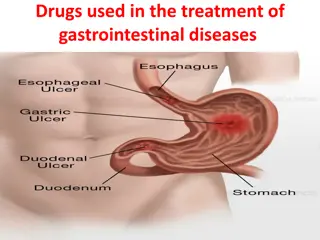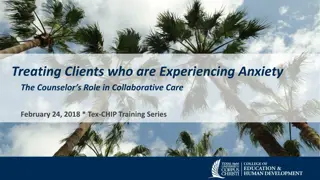Understanding Gastric Dilatation in Canines: Causes, Symptoms, and Treatment
Gastric Dilatation and Volvulus (GDV) syndrome, commonly known as bloat, is a serious condition in dogs where the stomach dilates and twists, leading to life-threatening consequences. Large breeds, especially deep-chested dogs, are more prone to GDV. The exact cause of GDV is unknown, but factors like eating quickly, genetic predisposition, and certain behaviors can contribute to its development. The pathophysiology of GDV involves various complications like gastric compression, vascular obstructions, splenic rotation, and respiratory difficulties. Emergency treatment is essential to manage GDV and prevent severe shock or even death.
Download Presentation

Please find below an Image/Link to download the presentation.
The content on the website is provided AS IS for your information and personal use only. It may not be sold, licensed, or shared on other websites without obtaining consent from the author. Download presentation by click this link. If you encounter any issues during the download, it is possible that the publisher has removed the file from their server.
E N D
Presentation Transcript
GASTRIC DILATATION IN CANINES Dr Mithilesh Kumar Assistant Professor cum Jr. Scientist Veterinary Surgery and Radiology Bihar Veterinary College, Patna-14.
Gastric dilatation and Volvulus syndrome (GDV), known as bloat, occurs in dogs when the stomach dilates and twists into an abnormal position, causing non-productive retching, a bloated abdomen, and other symptoms. GDV is a serious, life threatening condition that requires emergency treatment
INCIDENCE Large breeds, deep chested dogs are most frequently affected by GDV. Most dogs with GDV are mature, middle-aged, or older. Males are affected more than the females in a ratio of 2:1.
ETIOLOGY There is no definite known cause of GDV Eating a single, large meal daily Drinking large amounts of water immediately after eating Exercising vigorously on a full stomach
Gulping down food very quickly It may also be caused by a genetic factor, which results in weaker ligaments that hold the stomach in place.
PATHOPHYSIOLOGY 1. Dilated stomach lead to compression of the duodenum that prevents passage of gas in the small bowels. 2. Stomach dilates, the splenic vessels come to lie ventrally across the esophagus & become partial obstructed, leading to venous congestion & followed by splenomegaly.
3. Rotation of the spleen also is important in the development of gastric necrosis. 4. The dilating stomach exerts pressure upon the caudal vena cava, the vessels is partially occluded promotes the onset of severe shock. 5. As intragastric pressure increases, created ischemic hypoxia. 6. The distended stomach also puts pressure on the diaphragm making breathing for the dog more difficult.
7. Continued gastric distention leads to decreased venous return to the Rt atrium results in a decreased cardiac outputs. 8. Portal venous occlusion may initiate septic shock in dogs. Death is caused by hypovolemia or failure of reticuloendothelial system s capacity to neutralize endotoxins.
CLINICAL SIGNS Restlessness /anxiousness Abdominal discomfort Retching or dry heaves Distended abdomen Groaning Rapid or difficulty breathing
Excess salivation Depression Lethargy LATER SYMPTOM INCLUDE Cool extremities Pale mucus membrane and a prolonged CRT Arrythmias Low blood pressure Death
DIAGNOSIS Clinical symptoms Dog s medical history GDV is diagnosed with abdominal radiographs showing a distended stomach that has a shelf or c shaped.
treatment GDV is a medical emergency and treatment should begin as soon as possible. The sooner the dog is treated, the greater its chance of survival. Treatment is usually begun even before the test results (e.g., x-ray, an ECG, blood tests) are available. Treatment include the following
Intravenous antibiotics to protect against gastrointestinal infection that can lead to endotoxemia Eg Cefazolin soduium Cefoxitin sodium
Intravenous corticosteroids (to treat shock) Dexamethasone sodium phosphate dose-0.5 -1.o mg/kg Prednisolone sodium succinate dose 0.5 1mg/kg.
H2-receptor antagonists To prevent gastric ulceration, a potential postoperative complication Eg Ranitidine Cimetidine Famotidine
Medical decompression In cases of simple dilatation, the dog is sedated and a tube is passed through its mouth and into its stomach to remove built up gas and fluid. The procedure is known as medical decompression. After the build up is removed, warm water stomach lavage is performed to wash out accumulated food and gastric juices
Surgery If the stomach is twisted, it may be impossible to pass a tube through the oesophagus and into the stomach, and dog will need surgery. Whether dogs with GDV require emergency surgery or not, prophylactic surgery is recommended to avoid recurrence Surgery involves the following Decompressing the stomach by inserting a large needle or trochar into the stomach cavity Moving the stomach back to its normal location.
Suturing the stomach to the body wall (usually part of the rib cage) so it cannot twist again (gastropexy or anchoring surgery) Removing parts of the stomach that have been destroyed due to the lack of blood flow Removing the spleen if it has been compromised (splenectomy)
Complications GDV surgery is not always successful. Potential complication include the following Arrhythmias (irregular heartbeat) due to the decreased blood flow to the heart. Belching death
Disseminated intravascular coagulation (DIC), a blood clotting disorder that leads to diffuse bleeding, pain, and seizures Intermittent vomiting Postoperative gastric ulceration Recurrence of gastric dilatation.
Prognosis The prognosis depends on the dog s condition during and after the surgery. The more time that passes from the onset of symtoms to the initiation of treatment, the worse the prognosis.
Dogs that require removal of part of the stomach (partial gastrectomy) have a decreased chance of survival. Dogs that recover well 7 days after surgery have a very good chance of survival. Recurrence are common , especially in dogs that do not undergo gastropexies.
